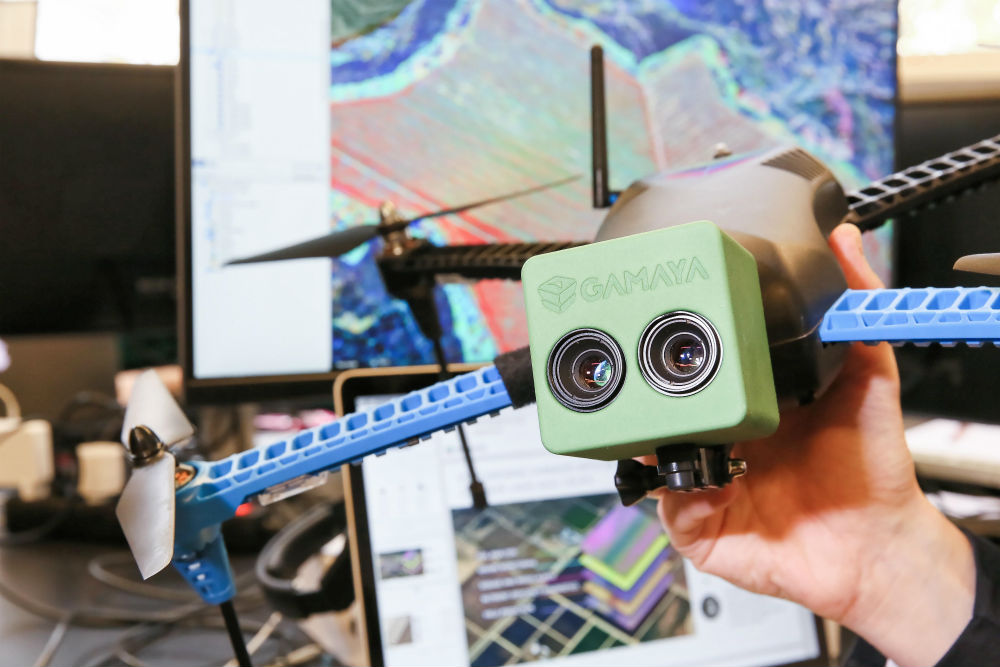If you were a farmer and had a vast array of soy, corn or sugar cane crops, you’d probably want to keep a close eye on their health.
For hundreds of years, farmers have maintained their land manually, but what if a drone could help How, you ask?
Gamaya, a company that spun out of Ecole Polytechnique Fédérale de Lausanne, has just raised over $3 million to produce its new agricultural drone system. The system combines a miniature hyperspectral camera and artificial intelligence to provide farmers with some very precise information regarding the health of their crops. It can also be used to monitor how much fertilizer, pesticides and other treatments are used on the crops.

The automatic, aerial system detects information such as seed type, stage of growth, hydration level, parasites and diseases. Using aerial views can be helpful in reducing costs by ensuring that herbicides, pesticides and fertilizers are only applied to areas that need them.
How it works
Hyperspectral cameras work by expanding the spectrum of colors that can be detected via recorded light wavelengths (from visible to infrared). These cameras can pick up the “spectral signature” of plants, which varies based on their stage of growth and the surrounding conditions. When there’s a lack of water or nutrients, for example, the physiological state of plants changes and affects how they reflect light. So, a healthy plant will have a different spectral signature from that of a plant experiencing stress.
A wide range of variations have been documented and put into databases for the purpose of this system.
Gamaya developed a software program that maps the nuances of the spectrum detected by the drone onto colors visible to the human eye. Each problem is coded by a specific color, so farmers can analyze their crops in detail directly from their computer screen. The system also provides suggestions, such as how much fertilizer to use, as well as yield projections.
The system is now ready for use with soy, corn and sugar cane fields.
“We are starting out by targeting Latin America, where the market is estimated to be worth five billion dollars,” said Yosef Akhtman, Gamaya’s CEO.
Since the farms in South America are vast, their conditions tend to be uneven. So far, in testing, the system proved to be successful in Brazil.
According to the company, the drones and accompanying AI can help farmers boost their harvest, bring down costs and reduce disease-related risks.
“It could boost profits by up to 30% by helping farmers quickly and accurately resolve problems,” said Akhtman.
The start-up has been selected by Forbes and Business Insider as one of the twelve most promising young companies in agriculture-related technologies.
The overall goal is to produce more and more food to accommodate the ever-growing population. .


Comments are closed, but trackbacks and pingbacks are open.